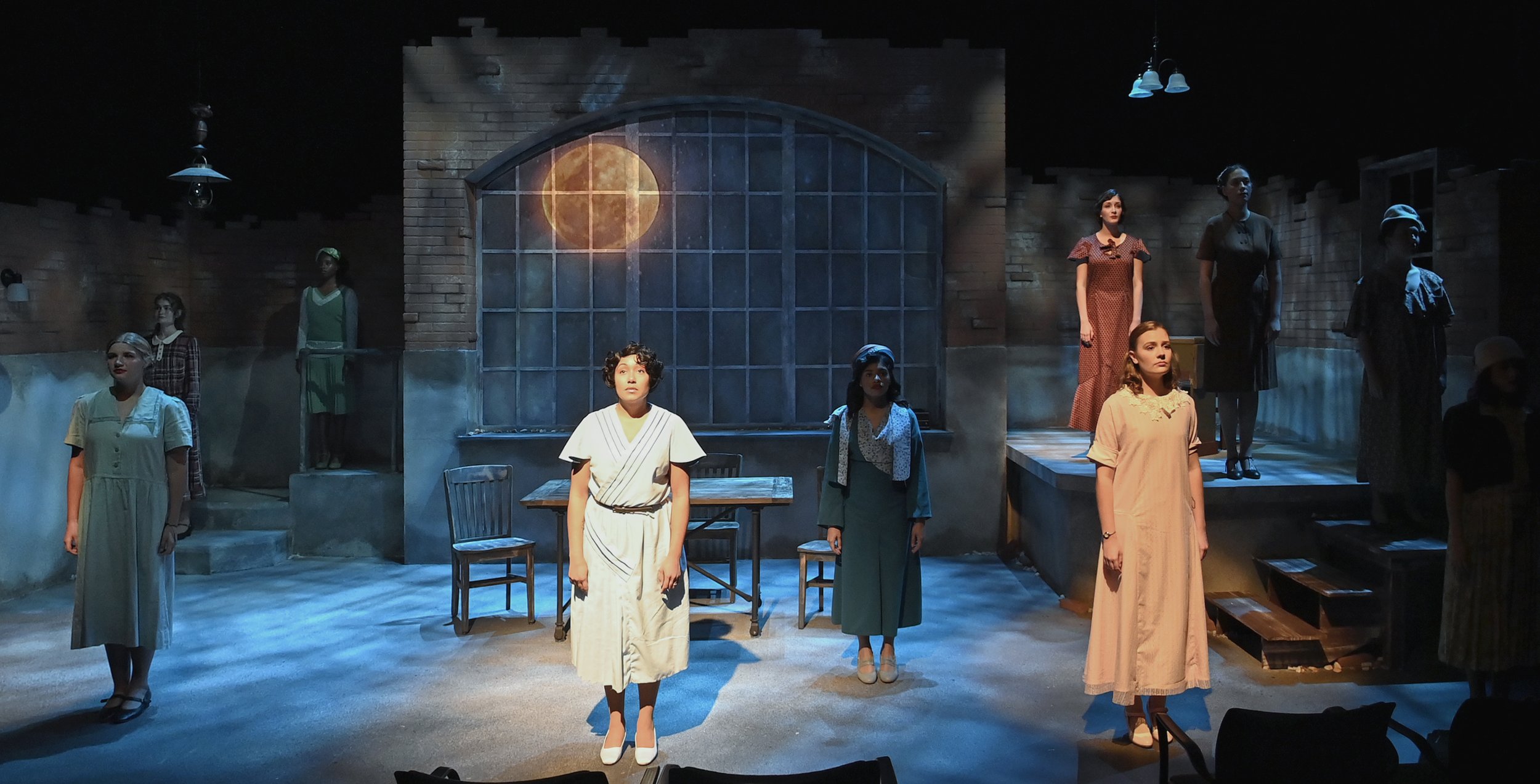
These Shining Lives
By: Melanie Marnich
Directed by: Robin Witt
UNCC Black Box Theatre Fall 2022
Design Team
Costume Designer: Mandy Worley
Scenic Designer: Tom Burch
Lighting Designer: Bruce Auerbach
Sound Designer: Emily Parker
Projection Designer: Benjamin G. Stickels
Synopsis
These Shining Lives is a story of love, friendship, and perseverance. Based on a true story, it features four women who worked at the Radium Dial Company in the 1920s and '30s.
We meet Catherine Wolf Donohue as she starts a high-paying job during a time when most women stayed at home. Soon, her achievements are overshadowed by grim health concerns that she and her colleagues begin to face.
What starts as a fight to find the truth about what is happening to their bodies, becomes a legal battle to not let the company get away with the horrors they allowed to go on.
They will not let their voices be silenced to time.
Design Intent
My intention for the design of These Shining Lives was to respect the history and lives of the real women who experienced working in the factories that used radium paint, and consequently lost their lives or became very ill due to radium poisoning. Because this was based on a true story, I wanted to keep it balanced between realistic and idealized. In talks with the director, we agreed that the four main characters would have distinct looks, and I thought it would be interesting visually to have each wearing their own signature color. Since it is a memory play, and each scene flowed into the next without scene breaks in between, it was important to have the base garments be something they could wear throughout the play. Instead of making anyone's clothes look too realistic or worn-in, we decided to keep everything clean to be in contrast with the set. The scenic designer had the set look like the ruins of the factory they worked in, so it allowed the performers to stand out against a backdrop of debris and rubble.
One of the requests made early on in the design process was to provide several options for each character to use if it fit the action on stage and the director's vision of the scene. They would have to quickly be able to change accessories, hats, and coats to indicate changes in location or time. In my character boards, I included jewelry, purses, hats, and coats. Many of these items were sourced and tried out with the performers during rehearsals. Ultimately not all of the items were used and each look was simplified from the original designs.
The rest of the cast and ensemble were dressed in various 1920s and 1930s garments which were mostly rented or pulled. I chose to have a variety to cover the years that pass throughout the play.
Catherine Donohue


The pleat details give interest as she moves across the stage and through time.

Light blue was chosen as an alternative to white. This gives a spectral quality.


At the beach she has a matching coat and hat.

She floats in and out of scenes like a dream.
Frances


Her button-up blouse, long skirt, and Oxford shoes gives a masculine suit style.

The color palette of green and earth tones represents her serious side.

Pops of mustard yellow to show she still liked to have fun.

Originally the tie was going to be made, but I was able to use one that we already had in stock.

The apron was worn in scenes she was working with the other women.
Charlotte


I chose a sewing pattern from the 1930s rather than the 1920s to set her apart as slightly more trendy for the time.

Charlotte is the racier one of the bunch. She is sassy and I wanted to show this off with the deeper red shade of her dress.

I pulled the cream color from her dress print so that when she wore the coat it would soften her look.

I chose fabric in a print with cream and navy blue to take down the vibrancy of the red so she didn't stand out more than the other women

Hair was waved and pinned up to look like the shorter styles of the time period.
Pearl
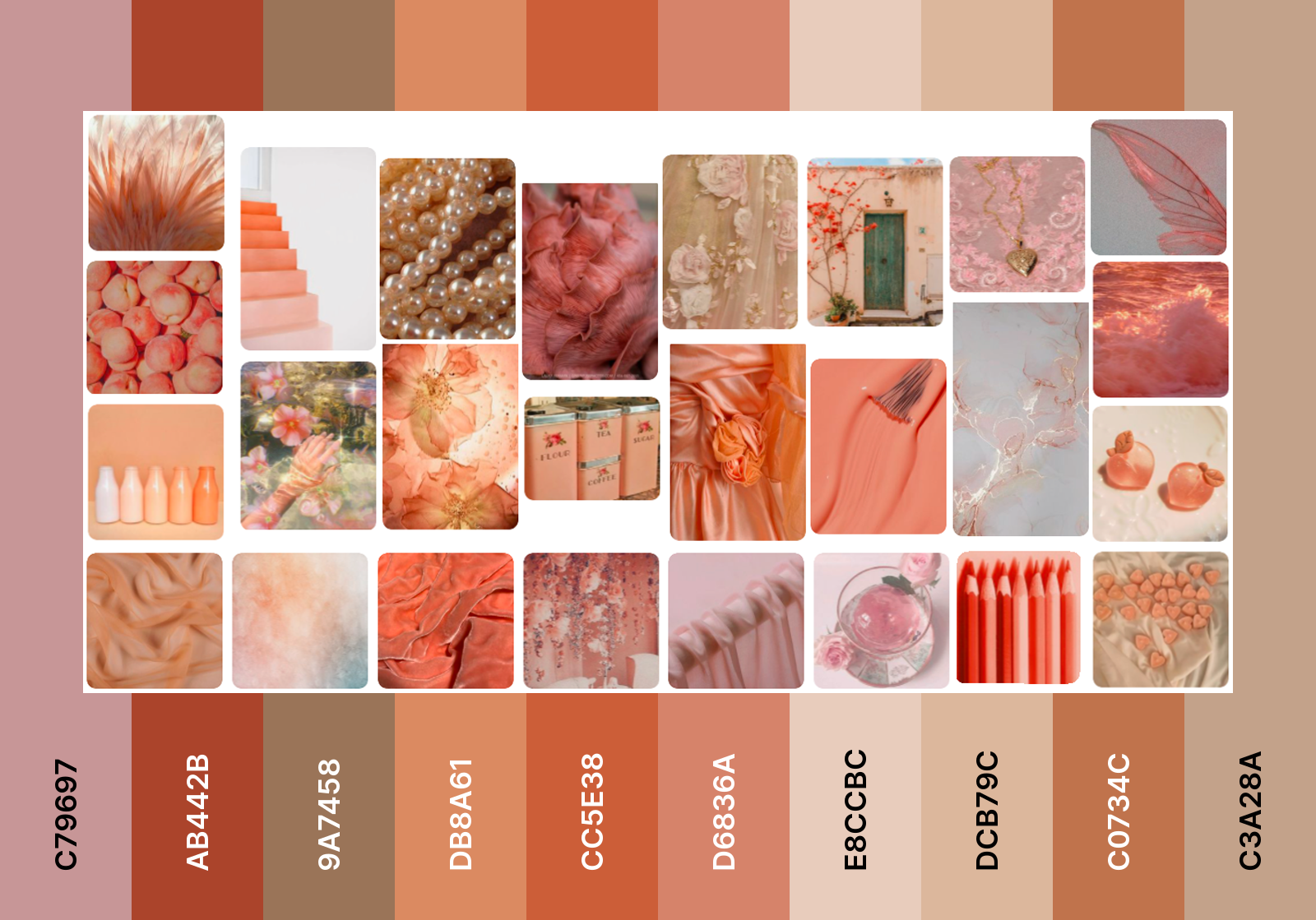

The collar gives her a younger look which highlights her whimsical personality.

Pink was chosen because it shows an innocence she still has.

The lace detail was repeated in the coat collar. She wears a hat with a large bow.

Close-up of the fabric.
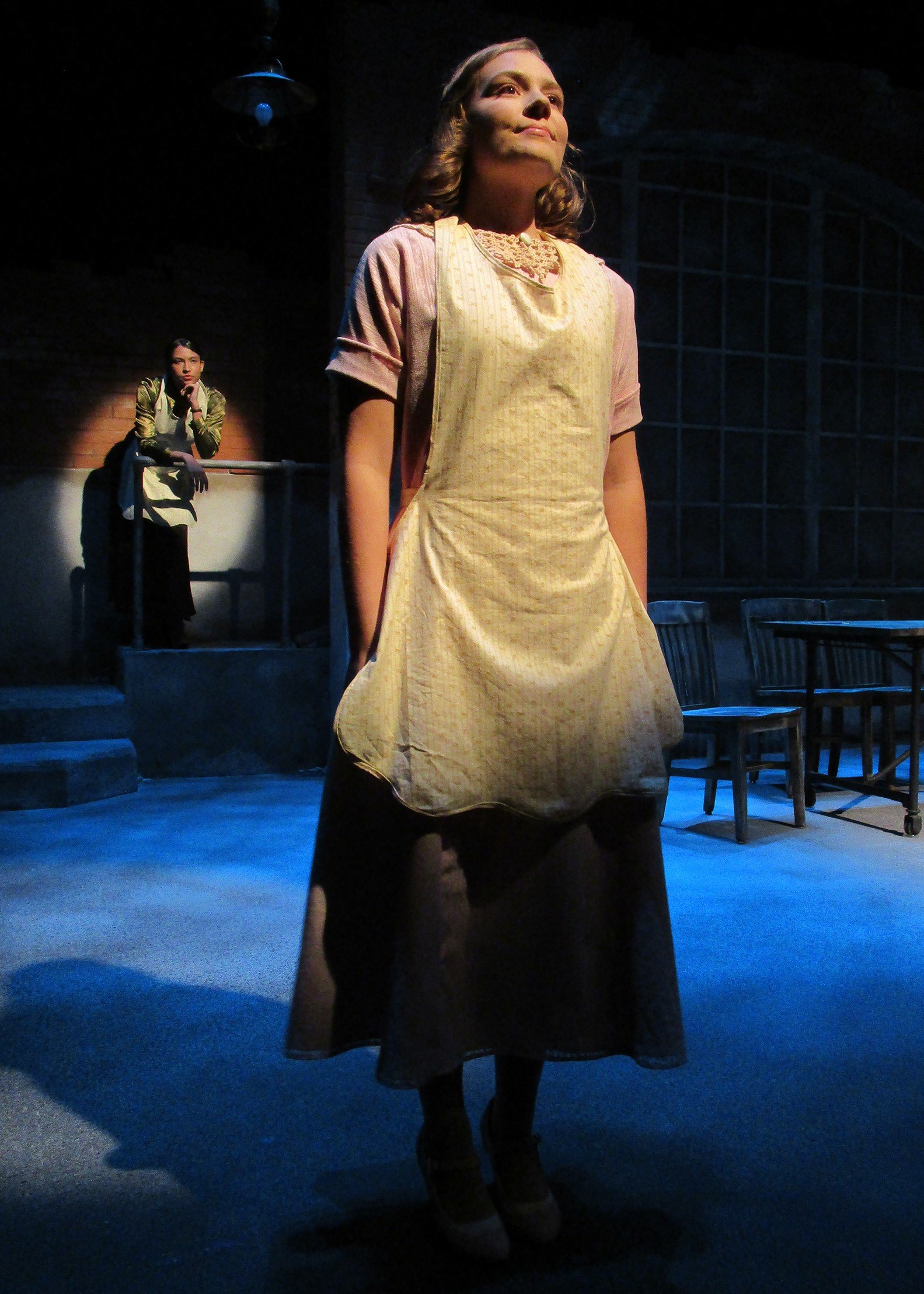
Apron worn at work. All the aprons had a scallop-edge hem.

The four main women at Lake Michigan.

This shows some of the purses and accessories.
Tom Donohue

Tom's original design had layers (jacket, waistcoat) that he could add or remove depending on the scene.

After working through the scene with variations on the original design, coveralls were requested.

The work clothing represented the memory Catherine had of her hard-working husband.

Under the coveralls he had a white button-up and black tie. The sleeves could be rolled up when he was at home.

His hat gave variation and showed he had just returned, he has removed his boots on his way in.
Mr. Rufus Reed

Mr. Reed was dressed impeccably, this showed he cared about his image to those around him.

He wore round glasses, had a tie clip, pocket watch and cufflinks. His green and yellow tie is a nod to his participation in keeping up the charade about the radium.

At the courthouse he appears in a pork pie hat to dress up his look a bit more.
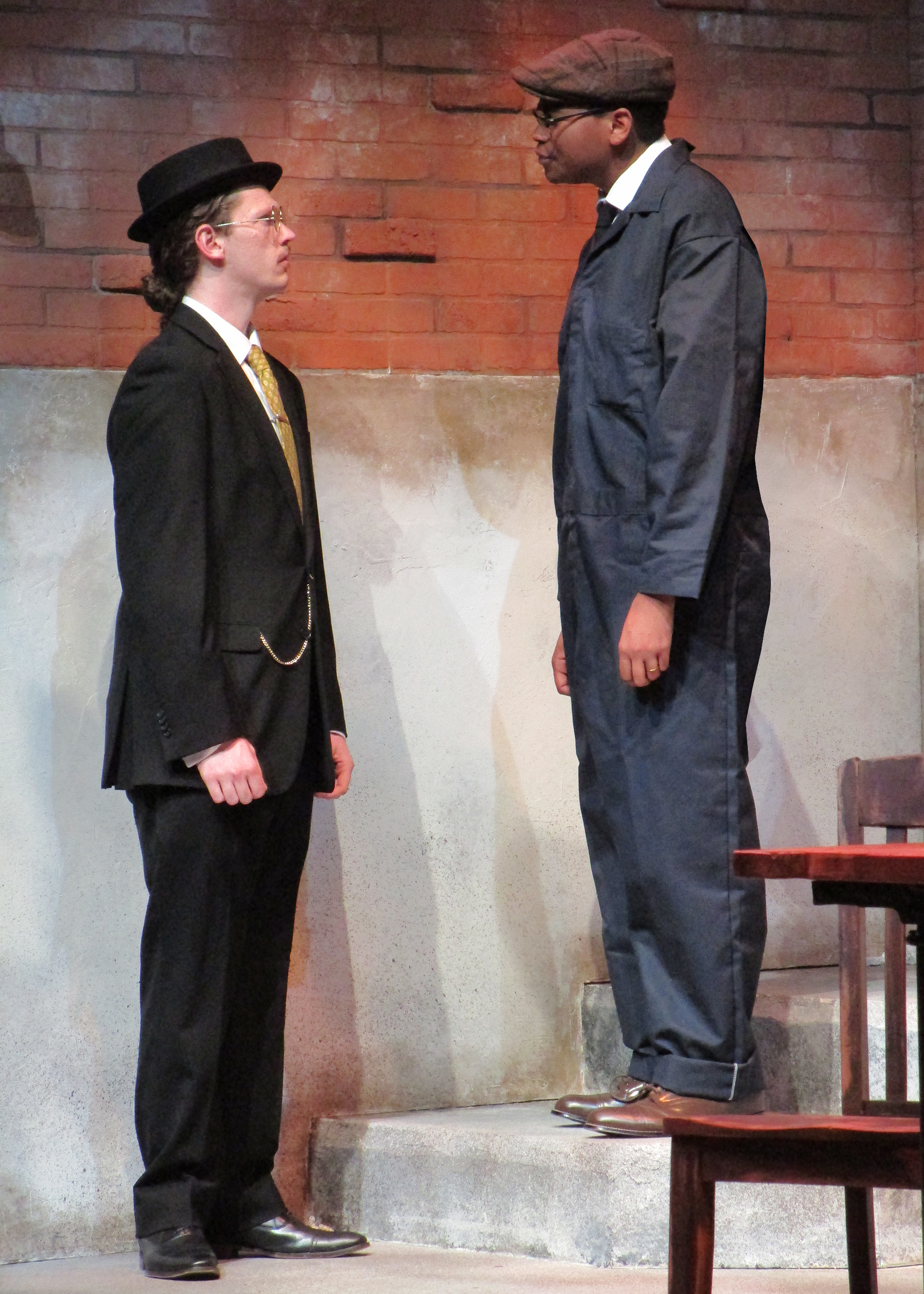
This shows the class differences between the two men. In the script, Tom points out that he notices Reed's expensive suit.
Donohue Children
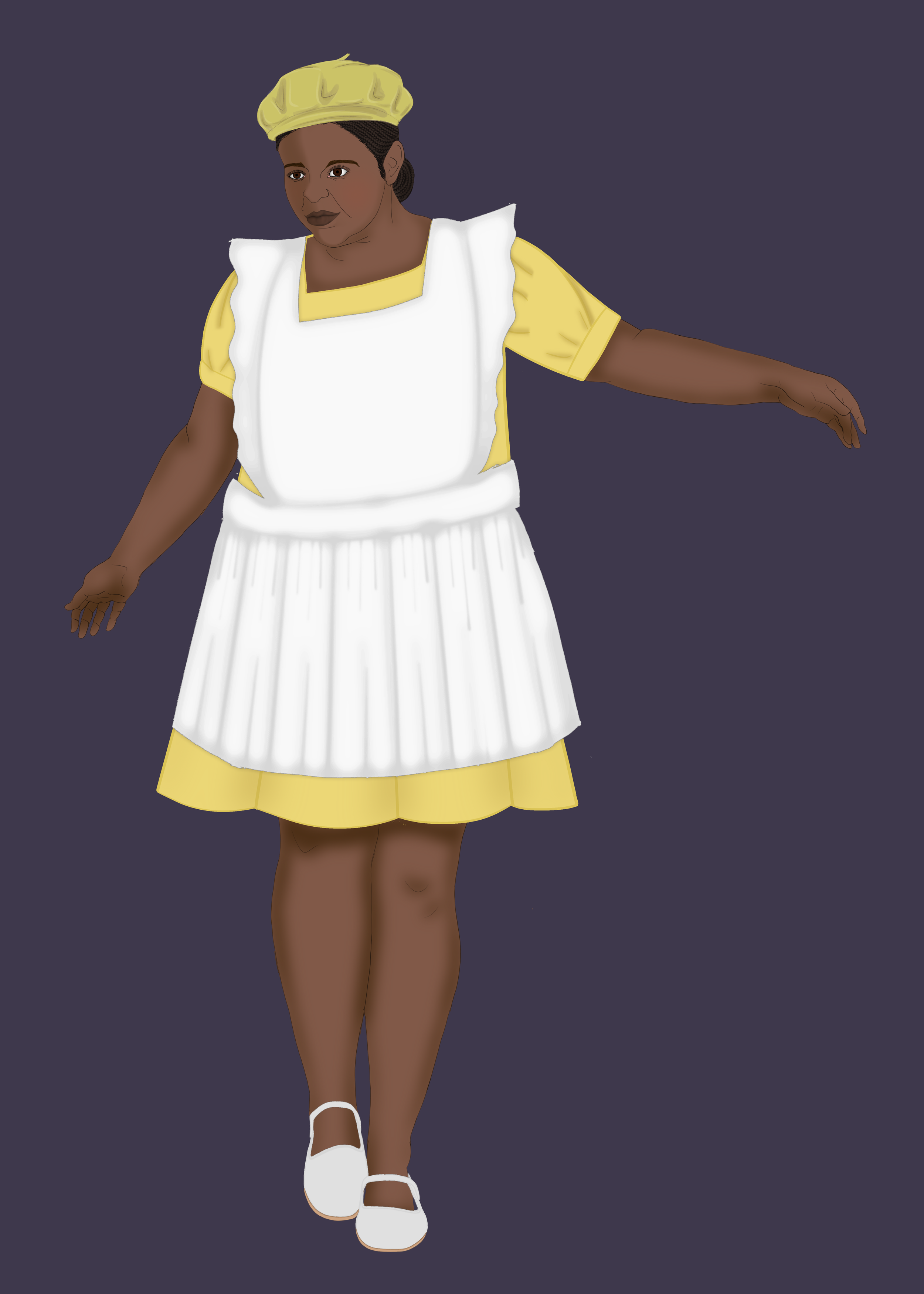
Girls of the time period often had knee-length dresses and pinafore's were common to protect the clothing.

Usually children would be seen wearing hats. This beret is cute.

The boy is wearing school clothing. At the time children would dress up for school.

Another view of the children standing.

The silhouette of the clothing helps show they are children.
Radio Announcer
Radium Singers

The radio announcer is flashy and wears a vibrant patterned tie with a clip. He has a more "cool" look to his style with his sleeves rolled up, trilby hat, and pleated pants.

The Radium Singers wear green turban-style headbands and have a red lip when performing.

Later they will appear onstage in the ensemble. So these details set them apart.
Radium Glow

I researched and tested various glowing body paints to find one that would be vibrant under the lighting effects, but not too messy or visible in regular light.

We did tests with the lighting designer and crew to find the best combination of paint and light.
Doctor Dalitsch
Doctor Rowntree
Company Doctor

Dr. Dalitsch is wearing a brown suit to show his warmth and softness as he finally tells the women the truth about their condition.

Dr. Rowntree has a mustache to indicate he is not a "good" doctor.

He is wearing round-lense glasses that were in style during the time period

The Company Doctor is in black pants and also has a mustache to indicate he is bad.
Leonard Grossman
Judge
Reporters

Grossman has a tailored suit to show he is serious and dedicated to his job. The peach tie and pocket square indicate his caring nature.

The Judge has a black robe over a simple tie and shirt.

The performers had multiple roles and wore coats and hats over their dresses to show the character changes.
Ensemble
Full Cast
This gives a clear view of each cast member's look.
Production images courtesy of Kat Lawrence, and UNCC COAA.
